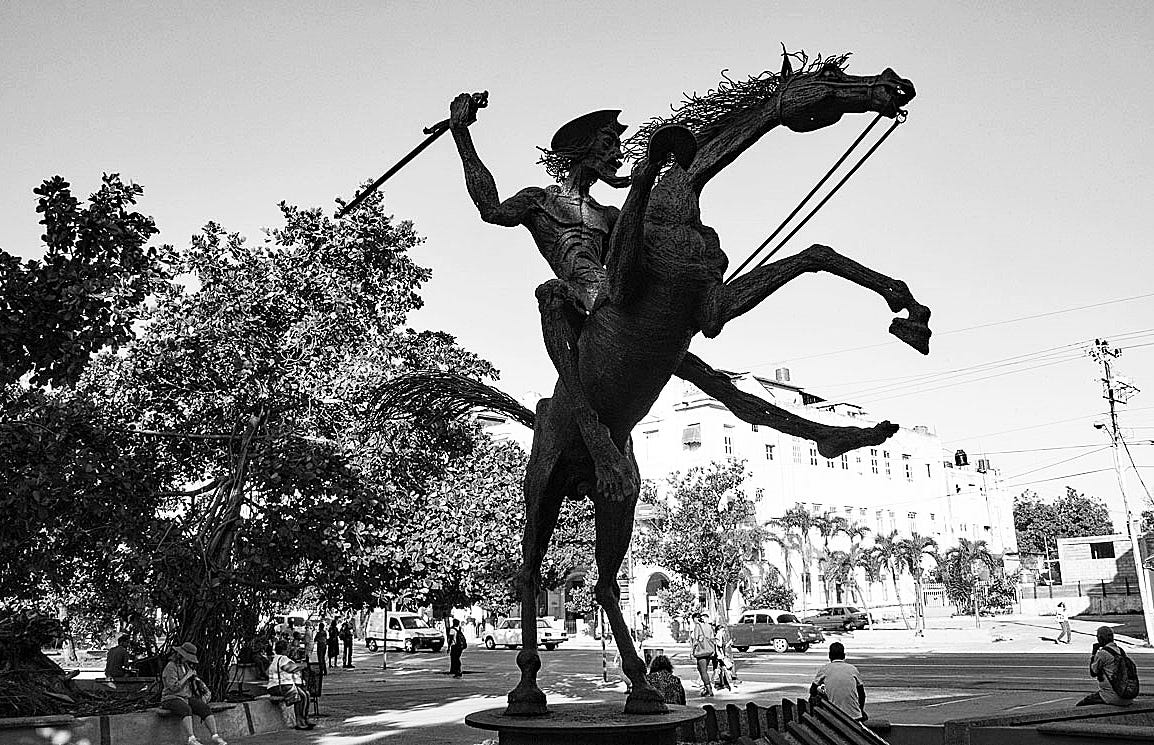For any fan of “I Love Lucy,” or those of us who’ve reached a certain age, that famous cry is instantly recognizable. Ricky Ricardo’s celebrated signature song introduced countless Americans to Cuban music and culture. Desi Arnaz, who played the television show’s Cuban band leader, had already made Babalú an established musical number for his orchestra in the 1940s. By 1957, when “I Love Lucy” went off the air, practically everybody knew of the song.
Watch Desi Arnaz play “Badass Babalú.”
That quintessential but basic cultural touchstone, however, belies the richness and diversity of a music that, along with the instruments, performance, and dance that come from Cuba, weaves together diverse musical traditions and practices from Spanish and West African influences.
Son Cubano (“Cuban sound”) is a genre of music and dance that originated in the highlands of eastern Cuba during the late 19th century. It is a syncretic genre (a combination of differing beliefs and/or practices assimilated from discrete traditions) that blends elements of Spanish (vocal style/metre and use of the tres, central to Spanish guitar) and African origin (its primary call and response structure and extensive use of percussion derive from the Bantu peoples’ traditions).
Since at least the 18th century, son Cubano has, in turn, influenced a wide variety of international genres and styles including rhumba, Afro-Cuban jazz, salsa, soukous, Argentine tango, Ghanaian high-life, West African Afrobeat, Dominican Bachata and Merengue, Colombian Cumbia and Spanish Nuevo flamenco.
However, I knew none of this extensive history prior to experiencing Cuba’s musical riches.
Joscelyn and I visited the fascinating island-nation in 2019 hoping to learn as much as we could about its history, art, and culture. The main attraction for me, though, was to see and photograph the scores of street musicians about which I’d long heard. I was not disappointed.
The wonder and joy of an evening stroll through the streets of Habana Vieja (old Havana) today (or in 2019, that is) uncovers a transcendent Cuban culture and spirit.
The golden light of sunset reveals grime, soot, and mold covered facades springing from their drab noon torpor into vibrant shades, tones, and shadows; the cityscape’s rectangular patterns contrasting against the slopes of the surrounding hillsides; and religious icons transforming into architectural wonders. Public art is found everywhere, from Don Quixote’s mounted and naked likeness in the Parque del Quijote de las Americas to Rafael Miranda San Juan’s brilliant sculpture, “Primavera” (2015) situated prominently along the malecón. The ‘50s vintage autos, refurbished or rebuilt, amble impressively by reminders of La Habana’s gangster past. Mobs of people jam bustling streets, parks, and squares as they rush to finish the day’s chores or simply take in the evening air.

And the music! Around practically every corner we’d find the spicy, energetic melodies of jazz, salsa and rhumba; lively percussion and a pumping bass punctuated with the high wail of a lone saxophone drawing in listeners (and dancers) as if a siren’s song. Or stop into a courtyard restaurant for a mid-day mojito and be greeted by a trio of Spanish guitars and seasoned, soothing baritone voices. The bands may be configured differently with guitars, keyboards, saxophones, trombones, countless percussion instruments, and robust, powerful singing, but the talent, musicianship and passion are always the same.
When Ricky Ricardo sang "Badass Babalú,” he was referencing “Babalú Ayé,” the Santería deity from the Afro-Latino religion that developed among Cuba’s West African descendants and is still widespread today. Joscelyn and I found, however, that the embrace of the Cuban musical spirit didn’t require divine intervention, simply an open heart.
This is an adapted version of the original essay that appeared in ParklifeDC.
(All photos @Mark Caicedo/PuraVida Photography)




















